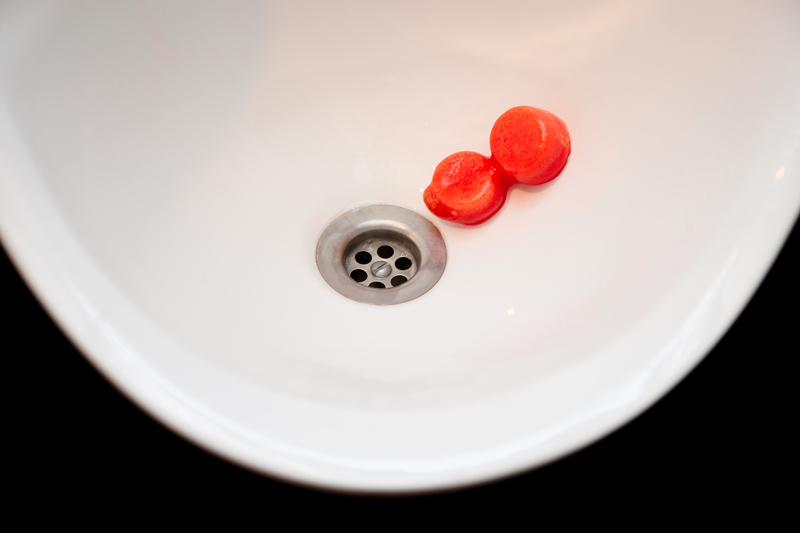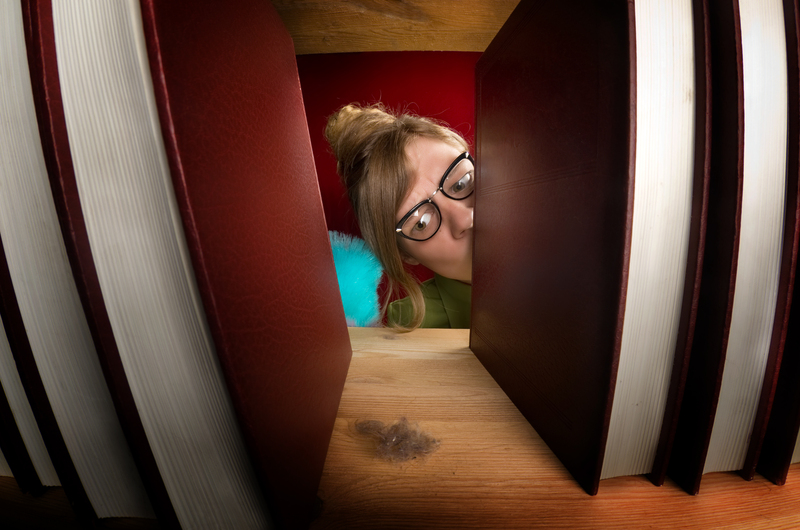Efficiently Handle Burnt-On Residue with These Stovetop Cleaning Tips
Posted on 18/08/2025
Efficiently Handle Burnt-On Residue with These Stovetop Cleaning Tips
Cooking is a joyful experience until you're left staring at stubborn burnt-on residue clinging to your stovetop. Whether you're an avid home chef or just reheating leftovers, everyone has faced the challenge of cleaning burnt stovetops. This comprehensive article explores the best stovetop cleaning tips to help you efficiently handle burnt-on residue and restore your cooking space to a pristine shine.

Understanding Burnt-On Residue: What Causes It?
Before diving into efficient cleaning methods for burnt stovetops, it's important to know how these annoying stains form. Burnt-on grime is the result of food and spills being exposed to high heat and then neglected. Over time, sugars caramelize, proteins burn, and fats carbonize, creating a tough layer that's difficult to remove.
- Sugar-Based Residue: Sugary spills from sauces or jams tend to harden and stick firmly to stovetop surfaces.
- Grease Stains: Fats and oils can create a sticky, sometimes yellowish layer on your stovetop.
- Protein Scorch Marks: Meat, eggs, and cheese can leave protein-based burns that are especially stubborn.
Initial Steps: Safety and Preparation
Efficiently handling burnt-on stovetop residue begins with safety and good preparation. Always ensure the stove is completely cool before you begin cleaning.
- Unplug or Turn Off Gas Supply: For electric stoves, unplug the unit. For gas, turn off the supply and disconnect removable burners.
- Remove Burner Grates and Knobs: Take off any removable parts so you have full access to the affected area.
- Prepare Cleaning Supplies: Gather microfiber cloths, a plastic scraper, non-abrasive scrub pads, baking soda, white vinegar, dish soap, and gloves.
Quick Checklist for Pre-Cleaning
- Wait for stovetop to cool
- Ventilate kitchen if using cleaning chemicals
- Wear protective gloves
Top Stovetop Cleaning Tips for Burnt-On Residue
Ready to tackle burnt-on grime efficiently? The following stovetop cleaning tips work across gas, electric, and glass-top stoves.
1. Use a Baking Soda and Vinegar Paste
Baking soda and vinegar offer a powerful yet non-toxic way to break down burnt-on food residue. This method uses the abrasiveness of baking soda with the fizz of vinegar for chemical-free yet strong stain removal.
- Sprinkle baking soda liberally over burnt-on spots.
- Spray white vinegar on top--let the mixture fizz for 10-15 minutes to help lift the residue.
- Wipe with a damp microfiber cloth or scrub with a non-abrasive pad until the stains are gone.
- Rinse and buff the stovetop surface for a streak-free shine.
2. Steam Power: Loosen with Hot Moisture
For especially tough burns, steam can help soften and loosen charred residue before scrubbing.
- Fill a shallow pan with water and place it on a hot burner for several minutes until it steams heavily.
- Carefully remove the pan (after turning off the heat), then immediately wipe the moist surface with a sponge.
- This method works wonders for gas and electric stovetops, especially around burner rings.
3. Try Dish Soap and Hot Water Soak
If you catch burnt-on messes early, soaking the area can prevent stains from setting.
- Add a few squirts of grease-fighting dish soap to hot water.
- Saturate a towel in this solution and lay it over the burnt spots for 15-20 minutes.
- Wipe the loosened residue away, repeating the process for stubborn areas.
4. Plastic Scraper Magic
Use a plastic scraper (never metal!) to gently pry off burnt food without scratching the stovetop. This works especially well on glass and ceramic surfaces.
- Hold the scraper at a low angle and nudge it under the burnt residue.
- If resistance is high, soften stains with baking soda paste or steam first.
- Never use knives or steel wool--they can permanently damage your stovetop!
5. Specialized Stovetop Cleaners
For deeply embedded or repeated burnt-on stains, commercial stovetop cleaners can make short work of the job. Choose a product recommended by your stovetop manufacturer, particularly for glass and ceramic surfaces.
- Follow all label instructions and test in a small area first.
- Wear gloves and ventilate your kitchen when using chemical products.
Efficient Cleaning Techniques By Stovetop Type
Gas Stovetops
- Remove and soak burner grates and caps in hot, soapy water for at least 20 minutes.
- Scrub away loosened burnt residue using a soft sponge or toothbrush.
- Clean the stove surface using the baking soda paste method above.
- Rinse and dry all parts completely before reassembly to avoid rust.
Electric Coil Stovetops
- Remove coils (if possible) after ensuring they're cool and unplugged.
- Clean drip pans by soaking in a baking soda and vinegar mixture.
- Scrub stubborn spots with a plastic pad, rinse, and dry thoroughly before reinstalling.
- The stove's glass or metal surface can be scrubbed with baking soda paste or specialized cleaner.
Glass or Ceramic Stovetops
- Never use abrasive pads or harsh chemicals that may scratch delicate surfaces.
- Use a razor blade scraper designed specifically for glass stovetops to tackle tough burnt-on stains, holding the blade almost flat to the surface.
- For everyday cleaning, rely on microfiber cloths and mild soapy water.
Natural and DIY Stovetop Cleaner Recipes
If you prefer green cleaning, these DIY stovetop cleaner solutions are safe, effective, and inexpensive.
- Lemon and Baking Soda: Sprinkle baking soda on the residue, then rub with half a lemon. The natural citric acid plus abrasion helps break down food.
- Hydrogen Peroxide and Baking Soda: Mix to form a paste and apply to tough stains. Let sit for 15 minutes before scrubbing.
- Salt and Vinegar: Sprinkle salt on burnt-on grease, then pour on a little vinegar. Let it fizz, then wipe away with a soft cloth.
- Rubbing Alcohol: For shiny stovetop finishes, wipe down with a cloth moistened with rubbing alcohol for a streak-free finish.
Prevent Burnt-On Residue: Smart Maintenance Tips
The best way to clean burnt-on residue is to prevent it from forming at all. Adopt these easy stovetop maintenance habits:
- Wipe down after every use with a damp cloth to remove spills before they dry and burn.
- Avoid overflows by monitoring pots and pans closely--use a lid when boiling liquids.
- Invest in burner liners (for gas/electric coil stoves) to catch drips and make cleaning easier.
- Use a splatter guard when frying or cooking messy foods.
- Deep clean your stovetop weekly for optimal kitchen hygiene.
Common Mistakes to Avoid When Cleaning Burnt Stovetops
Not every cleaning hack is stovetop-safe! Avoid these pitfalls for the best results:
- Using metal scrapers or steel wool (except for some gas burners): These will scratch glass, ceramic, and painted surfaces.
- Harsh chemicals: Oven cleaners, bleach, and ammonia can discolor or damage your cooktop finish.
- Letting residue build up: The more you delay cleaning, the harder it gets.
- Excessive water: Water can seep into electric burners and cause damage or shock.

Frequently Asked Questions on Removing Burnt-On Stovetop Residue
Can I use baking soda on a glass cooktop?
Yes! Baking soda is gentle and safe for most glass cooktop surfaces. Use a damp cloth to ensure residue is fully removed.
What should I do if burnt-on stains won't come off?
For persistent stains, repeat the baking soda and vinegar process, let it soak longer, and gently use a plastic scraper. Commercial stovetop cleaners are a last resort.
Does steaming really work for burnt food stains?
Absolutely! Moist heat softens charred residue so it wipes away more easily, especially when followed by a gentle scrub.
Conclusion: Restore Your Stovetop to Like-New Condition
With these expert stovetop cleaning tips, you have all the knowledge you need to efficiently handle burnt-on residue. From powerful DIY pastes to smart maintenance habits, you can keep every type of cooktop spotless and functional. Remember--a little preventive care goes a long way to minimizing cleaning time and preserving your kitchen's centerpiece.
Ready to defeat burnt residue for good? Incorporate these stovetop cleaning solutions into your weekly routine for a sparkling, inviting, and hygienic cooking area.
- Baking soda and vinegar break down grime safely
- Steam, soak, and scrape for stubborn stains
- Choose the right cleaning methods for your stovetop type
- Maintain your stovetop regularly to prevent future build-up
Whether you're facing a kitchen disaster or simply want to avoid one, these stovetop burnt-on residue removal tips are your key to a clean, efficient, and beautiful kitchen. Start today and enjoy every cooking session without worry!


